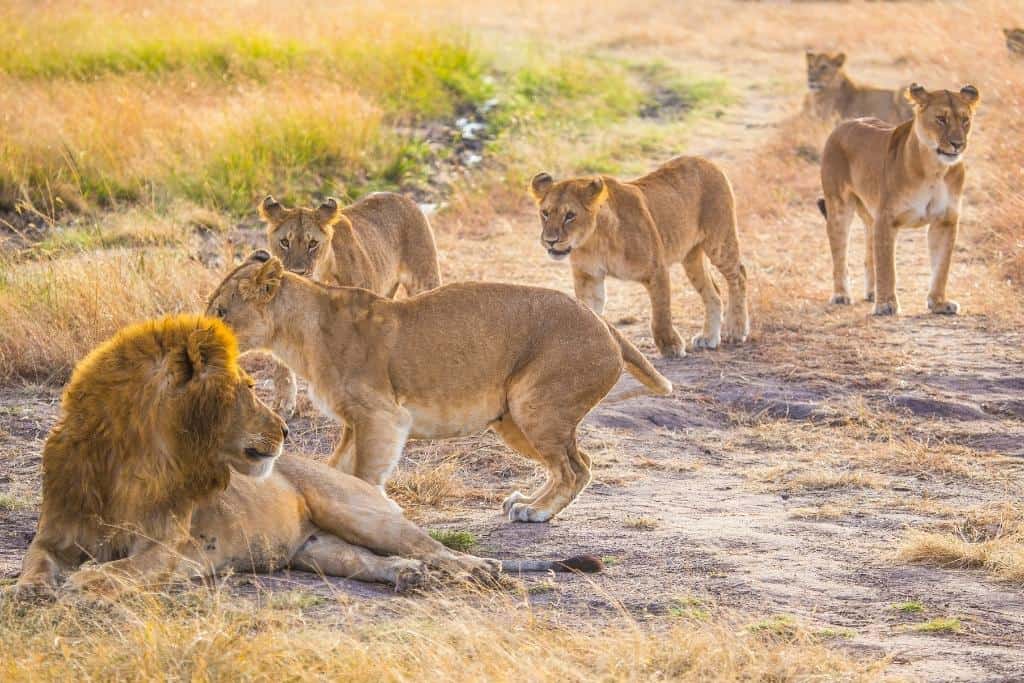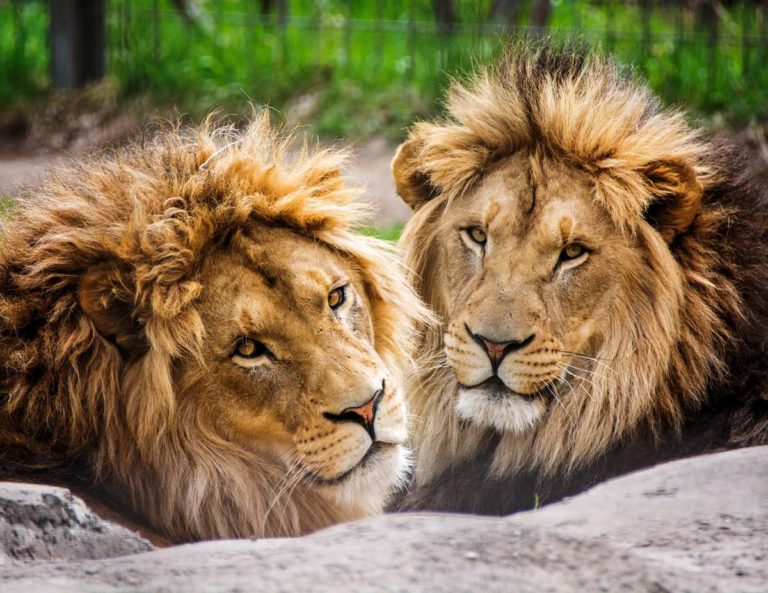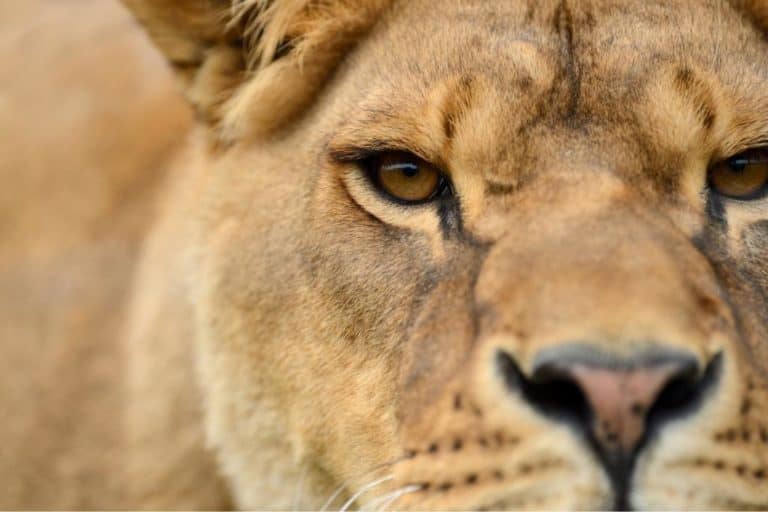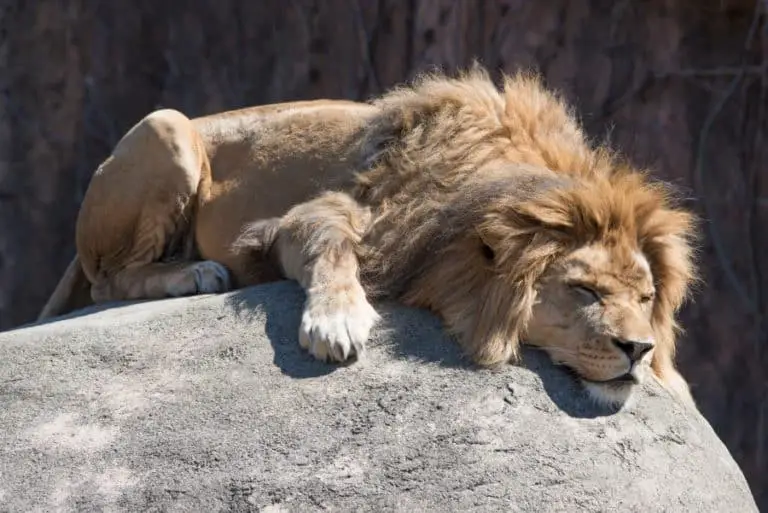Are Lions Matriarchal? Are Female Lions The Boss?
In the animal kingdom, there are a few types of social structures. Some species, like lions, live in groups called prides. Each pride is typically made up of related females and their young, along with a few adult males.
Because the females stay with their birth pride for life, while males typically only last for a few years, female lions play a dominant role in pride dynamics. This matriarchal structure is one of the things that makes lions unique among big cats.
- For example, in a tiger pride, the females typically only interact when they are ready to mate. The rest of the time, they live solitary lives.
- In contrast, lionesses form solid bonds and work together to raise their young and defend their territory.
This cooperative spirit is one of the things that makes lions such fascinating animals to study.
Social Structure of Lions

The social structure of lions is fascinating. Male lions typically form coalitions, while females and cubs live in pride units.
The partnerships help males compete for breeding rights, while the pride units provide females with support during hunting and child-rearing.
However, there is also a hierarchy within each group.
For example, male lions within a coalition often vie for dominance, and female lions within a pride unit typically defer to the oldest and most experienced members.
This complex social structure allows lions to effectively cooperate to survive and thrive in the wild.
Before pride living, male lions will often live a life of solitude.
Once they do find pride to call home, however, things change. Male lions establish a hierarchy within the pride that dictates which lion will mate with the females.
- The highest-ranking lion is typically the only one allowed to mate.
- Lower-ranking lions may get to mate if the top lion is away or not interested, but they generally don’t have much say in the matter.
This hierarchy also dictates which lions will eat first at a kill and where they will sleep. While it may not be the most equal system, it does help to keep things organized within the pride.
What are the benefits of having a solid social structure?

There are several benefits to having a solid social structure. For one, it helps ensure that everyone in the group can mate and produce offspring. This is especially important for lions, as their numbers have declined recently.
Furthermore, a robust social structure helps lions cooperate to defend their territory and hunt for food. In addition, it provides stability and order within the group and gives individuals a sense of belonging.
Without a solid social structure, lion populations would likely decline even further.
What are some of the challenges faced by lions?
One of the most enormous challenges lions face is living near humans. As human populations have grown and encroached on lion habitats, the two species have become increasingly in contact with each other.
This has led to conflict, with lions preying on livestock and humans killing lions in retaliation.
In addition, hunting lions for their fur has also taken a toll on populations. As a result of these various pressures, lions are now considered an endangered species.
Another challenge facing lions is their social structure.
Male lions occupy territories and associate with females and cubs only when they are ready to mate. Consequently, males typically don’t form strong bonds with any particular lioness or group of cubs.
This can make it difficult for them to protect their young from rivals or predators.
In addition, because males don’t typically help to raise their offspring, they don’t have a lot of interaction with cubs and may be less likely to tolerate them.
How do lions communicate with each other
Like many animals, lions use a combination of vocalizations, body language, and scent to communicate.
For example, they might use sounds like roars, growls, and purrs to express themselves and visual cues like eye contact, facial expressions, and tail positions.
In addition, lions use scent to communicate in a variety of ways.
For instance, they might rub their bodies against rocks or vegetation to leave their scent behind or roll in the dirt to cover themselves with the smell of the pride.
By using these various forms of communication, lions can express a wide range of emotions and convey important information to others.
Are female lions the leaders of the pride?
When it comes to leadership, the males are in charge. The most giant and most vigorous male lion will typically be the one who leads the pride, although there may be several other males who also have a say in decision-making.
While female lions may not be the formal leaders of the pride, they certainly play an essential role in its success.
What species are matriarchal?
A matriarchy is a social system in which females hold primary power and predominate in roles of political leadership, moral authority, and property control at the exclusion of males.
Three examples of matriarchal species are African elephants, gorilla troops, and humpback whale pods.
African elephants live in tight-knit family groups led by a matriarch, usually the oldest and most experienced female. Female gorillas also stay with their mothers their entire lives and form close bonds with other females in their troop.
These bonds are essential for cooperation in childcare and protection from males. Humpback whale pods are also led by females. Pods typically consist of a mother, her calf, and other closely related females.
Females cooperate in caring for calves and protecting them from danger. Matriarchal societies like these offer many benefits to female members, including excellent safety, more opportunities for reproduction, and enhanced access to resources.






